Student Blog
Classes

The POT of LUCK at the End of The Year Rainbow ⟩
April 28, 2016, by Rashelle
Beginnings and Endings Classes Community What are OS/OT?
Today is officially my last day of classes within the the Two-Year Master of Arts degree program for Occupational Therapy! This week my biggest stressors were preparing enough food to accommodate all of the potlucks that we have in celebration!
On Monday, the second year bible study leaders handed off the torch to the first year leaders with a wonderful picnic.
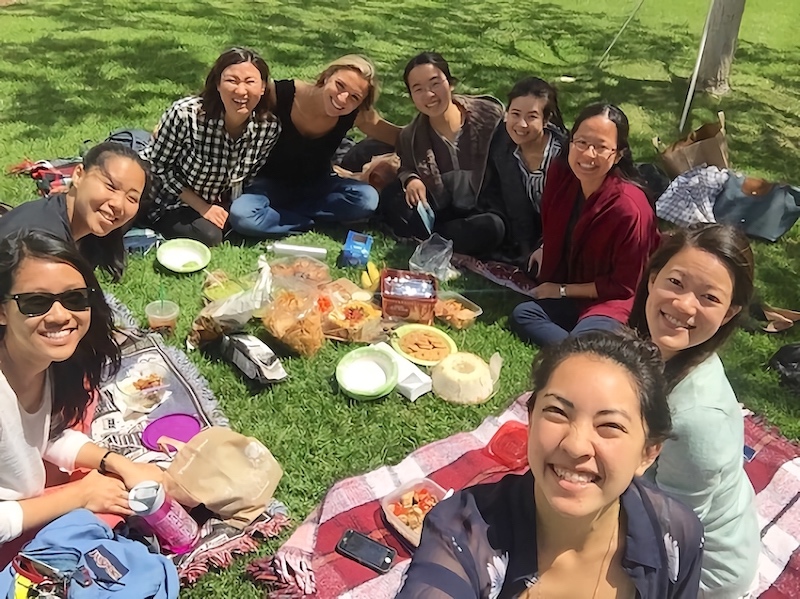
Bible Study Picnic Potluck
On Tuesday, we had our final practicum in OT 599: Occupation-Based Adult Neurorehabilitation, then celebrated with a giant feast!
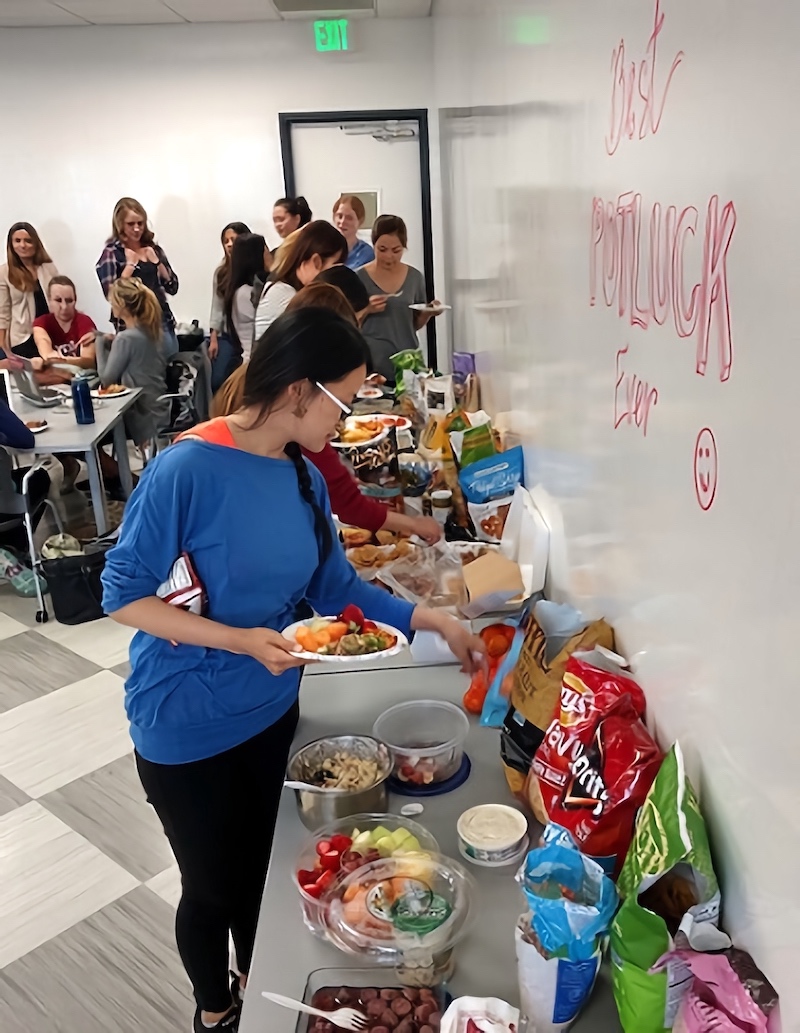
Neurorehabilitation Potluck
Then, today for my final class assignment, I will facilitate a group in OT 583: Lifestyle Redesign. I am a member of the group focused on, “Sensory Strategies for Wellness,” which Joe had previously mentioned in his blog. To lead this session I prepared different food items for my group members to sample. Each item was intentionally picked to serve as either an alerting or calming gustatory stimuli, in order to regulate one’s emotions and stress throughout the day.
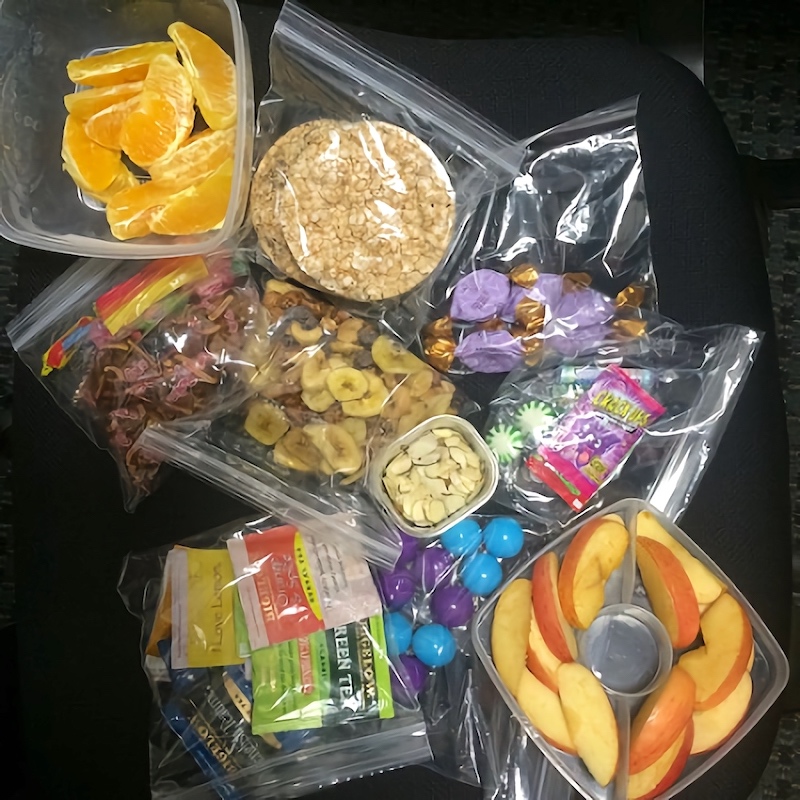
Sensory Strategies for Wellness Food
While my session is targeting taste as a sensory strategy for wellness, my classmates have led the groups prior, which discuss the other senses. Thus, to summarize and provide closure to our group, I also created this worksheet to remind everyone of what we have learned throughout our semester.

Toolkit for Sensory Strategies
Essentially, we built a toolkit of sensory strategies, to serve as a visual reminder, whenever we experience those emotions listed. I can’t wait to be able to utilize this with clients in the near future!
⋯

Fun Fridays: Fave Occupations Edition ⟩
April 22, 2016, by Joe
Classes What are OS/OT?
To cap off our Lifestyle Redesign course, we develop our own 5 week group program as a team. Each team gets to decide the theme or lifestyle area they want to address as a group; some group topics include “sensory strategies for wellness,” “life management skills” (e.g., finances, time management, etc.), and “healthy eating.” My group theme is “exploring recreation,” so each week, one of us leads the rest of the group in trying out a new recreational or leisure activity. Here’s a peak at some faves.
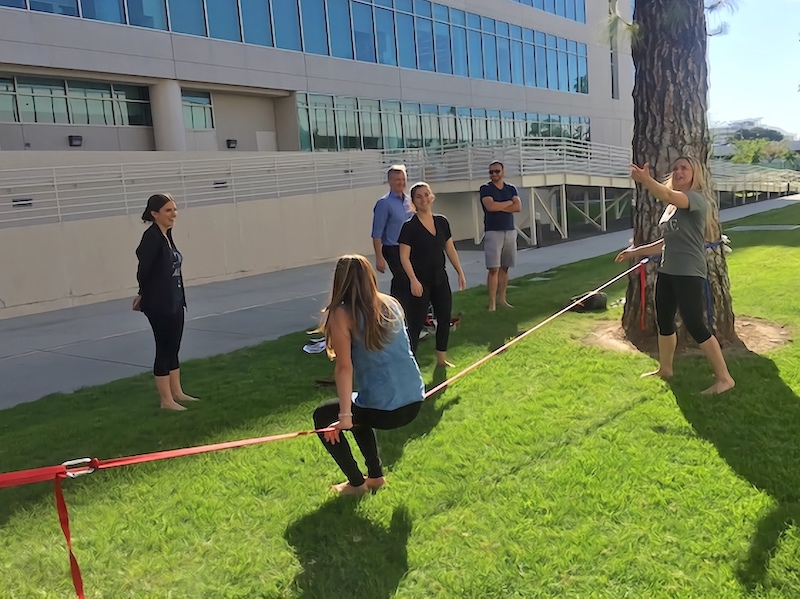
I kicked off our 5 week program by teaching the group one of my favorite occupations: Slacklining!
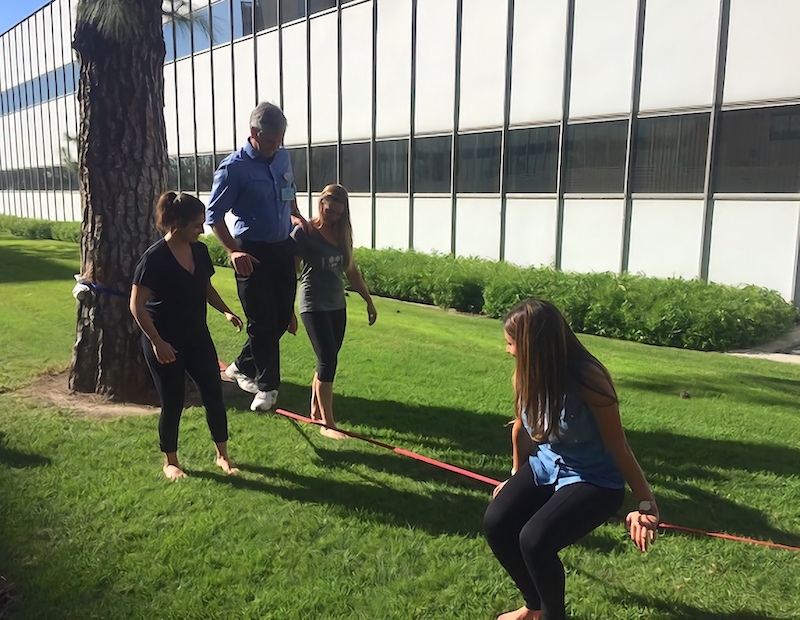
We caused quite a scene in front of our building to the point that our Occupational Science professor, Don Gordon, came out to join the fun!
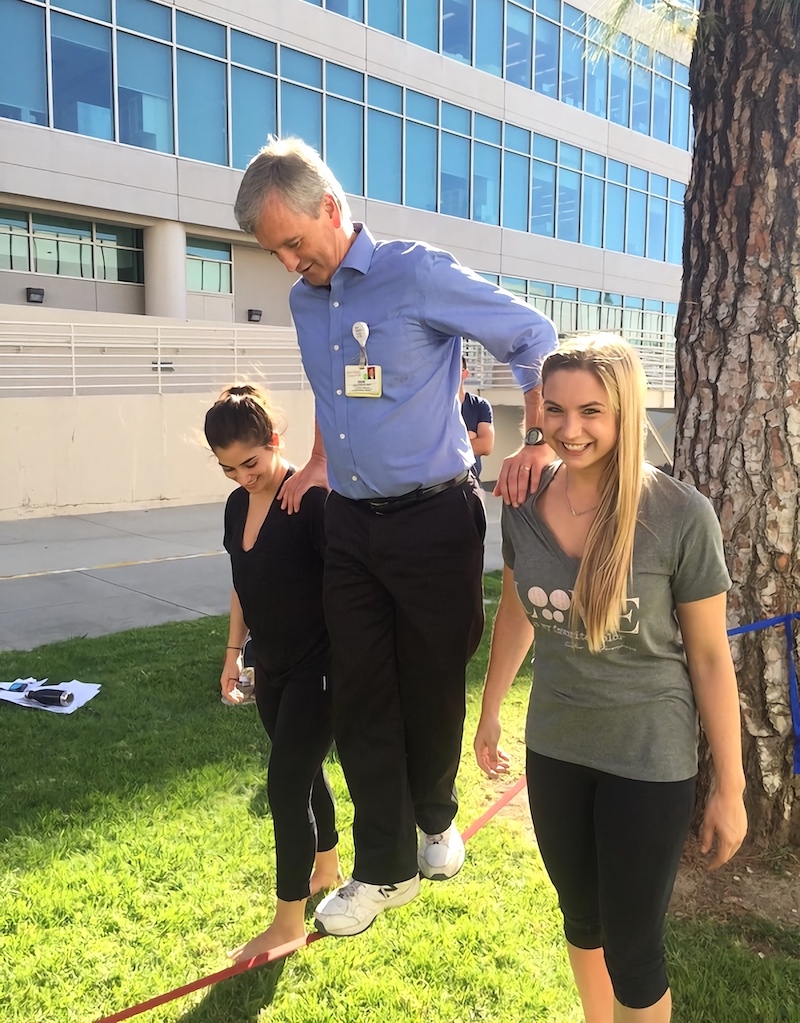
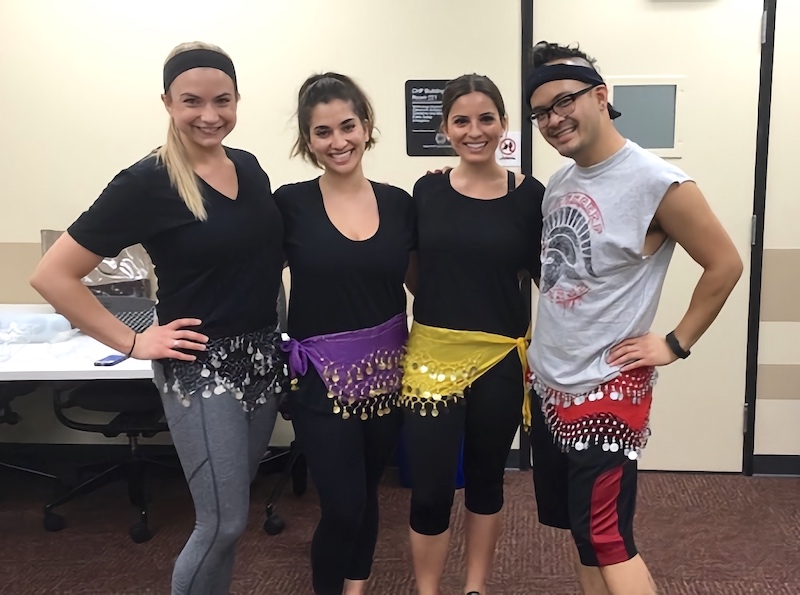
Last week, my classmate, Talin, led 5 of us in one of her favorite occupations: belly dancing.
Check us out with our hip scarves! Our Lifestyle Redesign professor, Camille Dieterle, joined us in the dance too, but we were having too much fun to take any action shots.
Our group is also going to explore cooking, coloring, and gymnastics. It’s a really fun class, but I’m about ready for a nap . . .
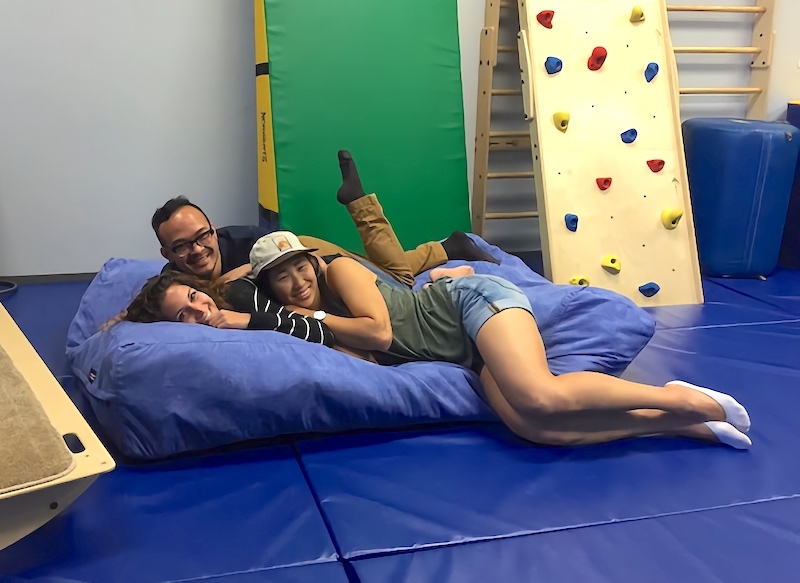
⋯

Rehabilitation with Motor Control ⟩
February 19, 2016, by Heather
Classes What are OS/OT?
Hello Springtime!
Apologies for my blogging absence these past few weeks – I have been extremely immersed in my classes. I am absolutely thrilled about my course load this semester. I am taking two required courses, Advanced Seminar in Occupational Science and Leadership Capstone. The electives that I am taking are Motor Control, Physical Agent Modalities, Hand Rehabilitation, and an Independent Study in Human Anatomy. The classes overlap very well, and I find myself learning a great deal in the areas of practice that I am most passionate about.
The Motor Control course takes place at Rancho Los Amigos Hospital, or as we call it, “Rancho.” Rancho is well known for its rehabilitation program, especially its occupational therapy programs. Many of the case studies that we have learned about in class have come straight from patients at Rancho, or from our professor’s clinical experience working at Rancho. Many of USC’s OT doctorate candidates and doctors practice at Rancho, and are actively involved in the Motor Control class.
The Motor Control class is focused on stroke rehabilitation in Rancho’s inpatient unit. This is very meaningful for me because of my history of working with my grandma after she suffered from a stroke. My experience of working with her is what led me to occupational therapy in the first place. It made me realize that I liked being in the position of helping others as I witnessed her recovery. Sometimes it takes a crisis to realize what you are good at.
So far in Motor Control, I have drawn upon my knowledge of human anatomy, physiology, kinesiology, and body biomechanics. We are largely focused on getting certain muscle groups activated in our clients. (Side bar: we practice on each other for a few weeks before we are introduced to actual patients in the second half of the course). We are taught that before we can work on ADLs/IADLs with a patient, we need to ensure that they can move in certain ways for functional performance. We begin by facilitating movement at the pelvis, and then move on to the trunk and scapula. If we cannot facilitate movement easily, we mobilize these certain areas which requires a more hands-on approach. Additionally, we learn how to use orthotics and tools that have proven to be effective in stroke rehabilitation. With practice and clinical experience, we will begin to realize what treatment techniques will be most useful for our patients to regain function.
I have learned from Motor Control, and from my Grandma’s recovery, that the basic tenet of stroke rehabilitation stems from the idea that all activity should be purposeful in recovery. I look forward to working directly with the patients in the second half of the course.
This class has truly united my vocation with my avocation, and I am so thrilled to be even further along my road to becoming a licensed OT in just a few months!
⋯

Hands-On Learning! ⟩
February 4, 2016, by Jodie
Classes What are OS/OT?
This semester I am taking Occupation-Based Adult Neurorehabilitation, Hand Rehabilitation and Occupational Therapy in Acute Care as my elective courses. Although we are only four weeks into this semester, I have already learned so much and am fascinated by all my classes! Each elective course provides such a comprehensive review of the course topics and allows for very hands-on learning opportunities. Throughout our program we get to see course content applied in practice through both our Level I and Level II fieldwork experiences however, this semester we get to apply course concepts on ourselves and our classmates and really hone in on our skills as practitioners before we graduate!
In my acute care class, we have the opportunity to shadow occupational therapists at Keck Hospital of USC, our world-renowned academic medical center. These clinical experiences coincide with lecture content and significantly enhance the learning experience. In my occupation-based adult neurorehabilitation class, we have both a lecture and lab portion. During lab, we get very hands-on practicing various neurorehabilitation techniques that we learn in class that day. Again, this opportunity to practice what we’re learning and clinically apply concepts from lecture has really made this semester so enjoyable and enriching. This week in neurorehab class, we practiced kinesiotaping and dynamic taping techniques on each other. Here are a few pictures from all the fun we had while learning and practicing this technique!

Classmate applying kinesiotape on another classmate!
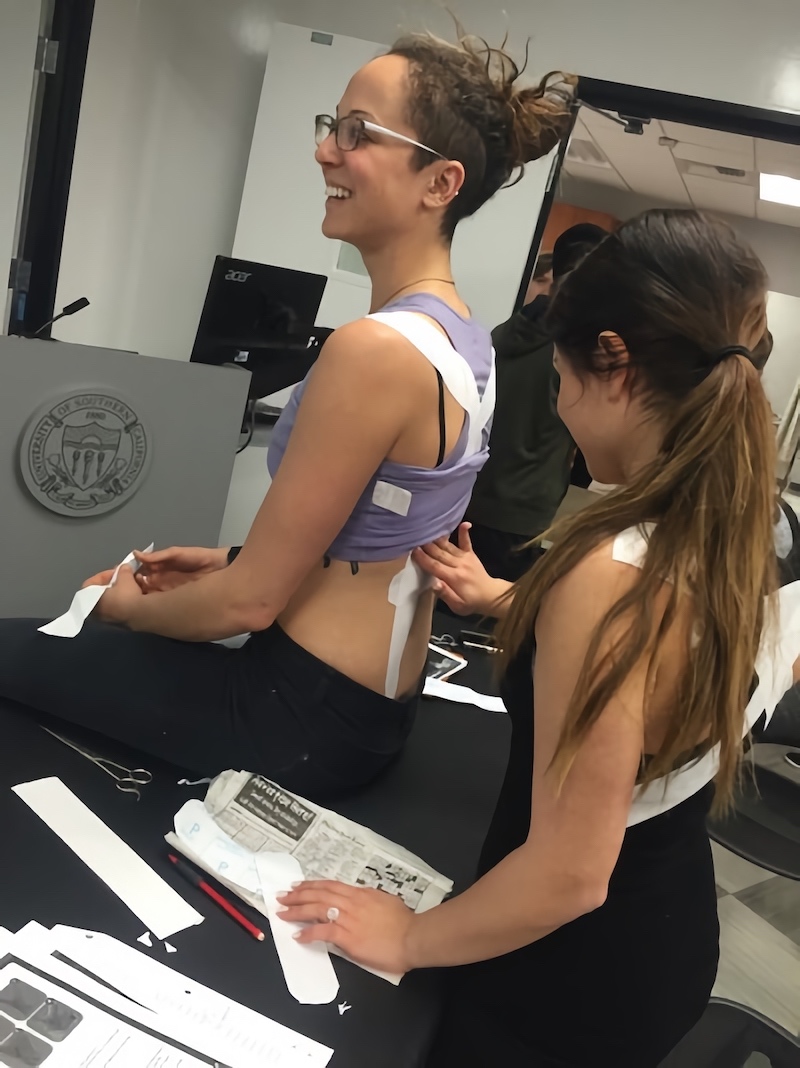
Another classmate applying kinesiotape on a classmate!

How did we do!?
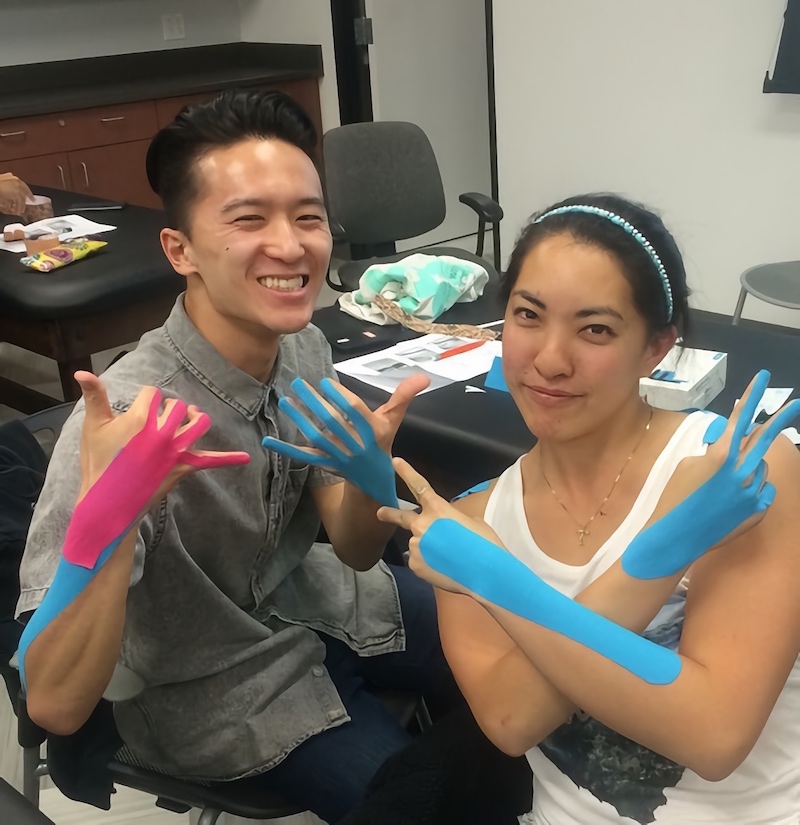
Nick and Rashelle with Kinesio Tape
How did we do??
⋯

A Sneak Peek into our SChedule and Classes! ⟩
January 28, 2016, by Rashelle
Classes School/Life Balance
Here’s a visual representation of our semester class schedule!
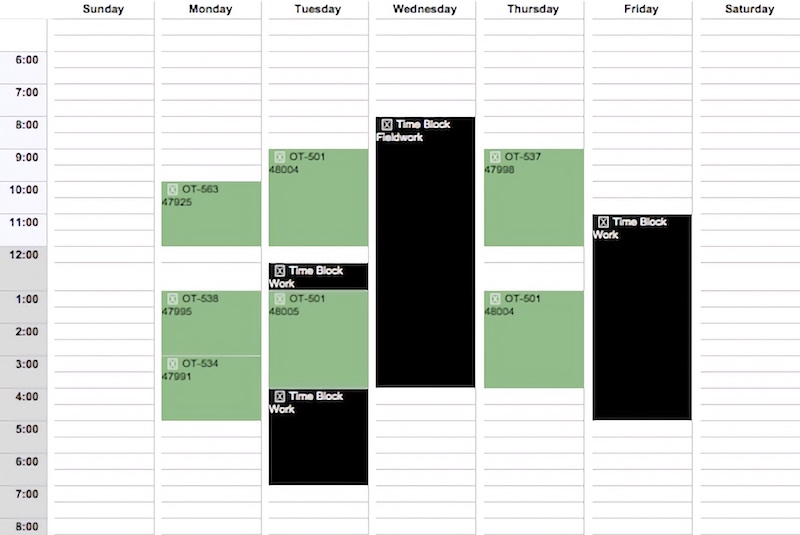
Class Schedule
To break it down for you:
Mondays
We are typically all together in the lecture hall, learning core elements that are essential to our profession (ex: health and wellness, behavioral neuroscience, adulthood and aging, clinical reasoning & therapeutic use of self).
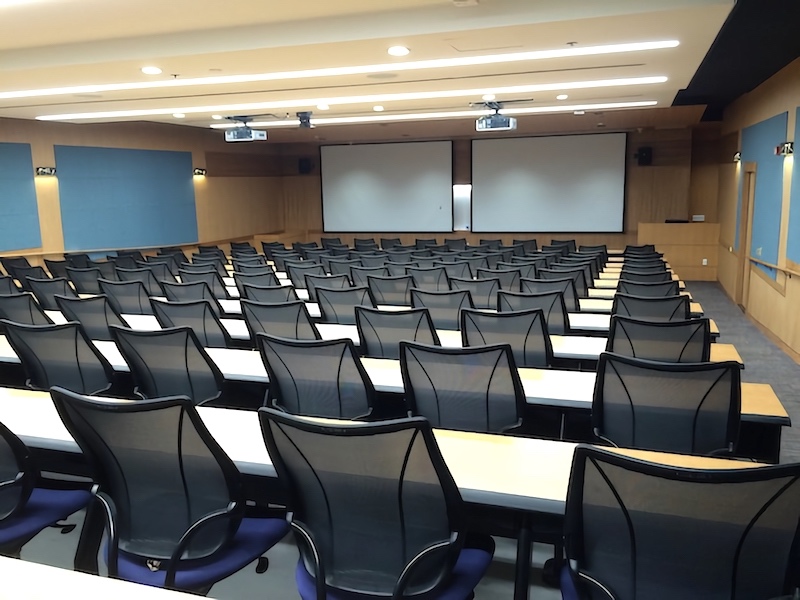
Lecture Room
Tuesdays
You meet with your cohort in your semester-specific practice immersion (either Adult Physical Rehabilitation, Mental Health or Pediatrics), in a room that holds about 1/3 of your class, or about 45 people.
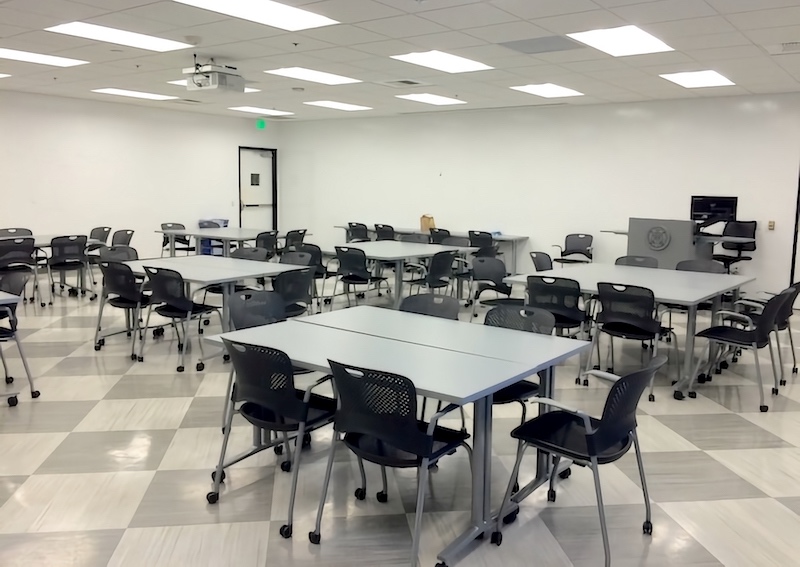
Regular Room
Wednesdays
Last semester, when this screenshot of my schedule was taken, I had my fieldwork day on Wednesday! We spend a full day at a site, relevant to our practice immersion, which offers us a chance to observe treatments with people in real life.
Thursdays
Every week for 3 hours, you will be enrolled in a lab that matches your practice immersion. This lab contains ½ of your cohort, or about 22 people, and gives you hands-on experience to practice certain assessments or techniques on your fellow classmates! You will also have another core class emphasizing the importance of research, so that we may incorporate evidence-based practice in therapy.
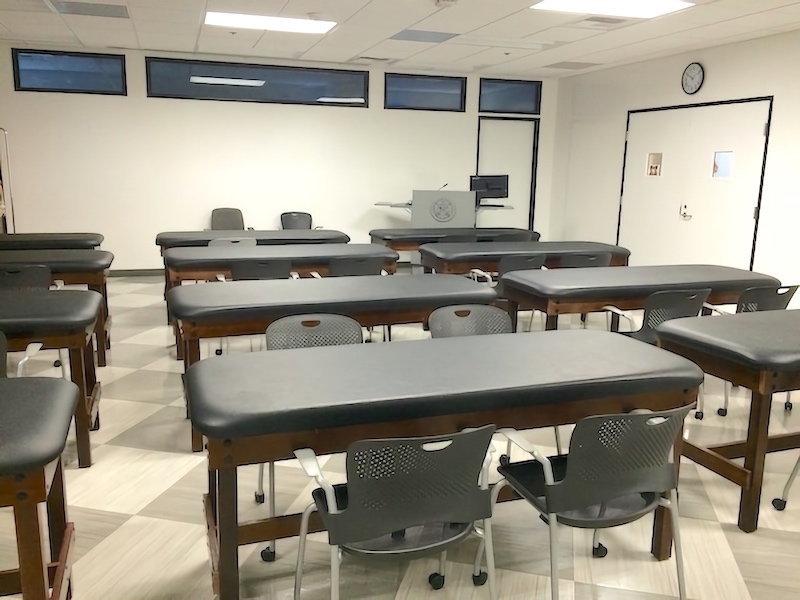
Lab Room
Fridays
Days off! People use this time to work, research, or relax. This past Friday was actually our annual OT Vegas Trip! It was so nice to participate in ALL my favorite occupations as we hiked, ate at buffets, danced, and socialized throughout it all!

Hiking Red Rock Canyon
Shout out to the MA-I students who are from various countries, and taught me so much about international OT practices! So happy I got to bond with you all this trip!
⋯





